Going Green
O’ Christmas tree, to mulch with thee!
January 6, 2011
 No matter where you hang your stockings in Los Angeles County, there’s a recycling program in place to give your increasingly brown Christmas tree a green send-off.
No matter where you hang your stockings in Los Angeles County, there’s a recycling program in place to give your increasingly brown Christmas tree a green send-off.
The Department of Public Works is picking up trees through January 15 in unincorporated areas of L.A. County. Simply place your tree curbside on your regular trash collection day. The City of L.A. will be collecting trees placed in or beside green waste bins. For more details, please visit the City Bureau of Sanitation.
You can also drop off trees at numerous collection sites throughout the county. For locations and a list of city-specific tree recycling guidelines, go to http://www.cleanla.com or call 1(888)-CLEANLA.
Before taking advantage of any of these recycling programs, which transform the trees into compost, mulch or ground cover, make sure all ornaments, tree strands and tinsel have been removed.
By recycling your tree, you’ll not only be helping the planet, you’ll also be protecting yourself and your property from fire risks that come with old trees. According to the United States Fire Administration, dried out holiday trees account for 250 fires annually, causing deaths, injuries, and millions of dollars in property damage.
If that doesn’t grab your attention, here’s video of a spruce setting an entire room ablaze in 40 seconds:
Finally, it’s in the (reusable) bag
November 16, 2010
Hoping to create a domino effect across the region, the Los Angeles County Board of Supervisors on Tuesday voted to ban plastic grocery bags, long considered an environmental menace and aesthetic blight.
The ordinance, which would take full effect next July, would outlaw the ubiquitous single-use bags only in stores in the county’s unincorporated areas, home to 1.1 million people. But the board majority made clear that the larger goal is to get the county’s 88 separate cities to adopt the same law.
Ultimately, the board hopes that the movement’s momentum will carry to Sacramento, where a nearly identical measure was recently defeated in the state senate after industry opponents to the ban spent more than $2 million on lobbying in the weeks before the highly-anticipated vote. Supervisors argued that a statewide measure would bring conformity to a potential patchwork of municipal laws that could confuse customers and businesses alike.
“When we pass an ordinance of this type, the rest of the state has to take notice,” said Supervisor Zev Yaroslavsky, a leading proponent of the ban, who called the bags “urban tumbleweeds.”
Should a groundswell not materialize, Yaroslavsky said, “we can do a lot here because we are 10 ½ million people….Even if nobody else does a single solitary thing, we can make a difference.”
Added Board Chairman Gloria Molina: “This is a major undertaking for L.A. County and I’m proud. The wave is beginning here…”
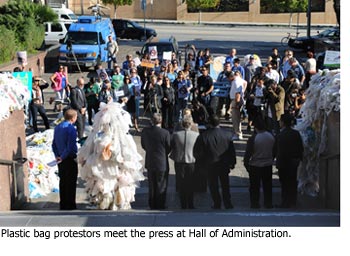 The measure was approved by a 3-1 vote. Supervisors Yaroslavsky, Molina and Mark Ridley-Thomas supported the ban, while Supervisor Michael D. Antonovich voted against it. Supervisor Don Knabe was not present.
The measure was approved by a 3-1 vote. Supervisors Yaroslavsky, Molina and Mark Ridley-Thomas supported the ban, while Supervisor Michael D. Antonovich voted against it. Supervisor Don Knabe was not present.
In Los Angeles County alone, more than 6 billion plastic bags are used each year, with only about 5% of them being recycled. Although the bags may feel flimsy, they are molecularly almost indestructible, surviving hundreds of years without degrading. Meanwhile, they litter the streets, clog landfills and flow into the ocean, endangering marine life and the commerce of the coastline.
The board’s action, which comes after several years of failed voluntary efforts, is certain to be welcomed by the growing numbers of environmentally conscious shoppers who’ve already started toting reusable bags to the market or who’ve been opting for paper, which is biodegradable. But a good number of consumers no doubt will not immediately embrace the mandated changes in their shopping habits.
The new county law not only bans single-use plastic bags, it also specifies what sort of bags can be provided in their place. Stores would have the option of giving their customers either paper bags—for which they must charge 10-cents apiece—or reusable bags. The intent of the 10-cent charge is to push consumers towards the reusable bags, the most environmentally-friendly option.
On Tuesday, the board approved an amending motion that broadened the ordinance’s definition of what constitutes a “reusable bag.” As originally written, the law would have required that the bags meet various tests for strength and durability, and that they be machine-washable. Under the amended version, the bags also could be made of materials that can be wiped clean or disinfected by hand. These standards are designed to prevent retailers from offering consumers new kinds of plastic bags that are also bad for the environment.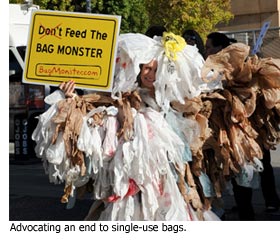
The board approved a second amendment specifically stating that reusable bags must comply with state and federal restrictions on permissible levels of lead and other metals, including cadmium. That 11th-hour addition came in the wake of recent reports that some reusable bags have contained high-levels of lead, leading U.S. Sen. Charles Schumer (D-N.Y.) this week to ask federal regulators to investigate the issue.
The board also directed that plastic carryout bags be phased out by next July at all county-operated facilities and offices.
In anticipation of the widely publicized vote, the board’s usually quiet meeting room was filled on Tuesday with boisterous supporters and opponents of the measure. The same lobbying organization that helped undo the Sacramento legislation—the American Chemistry Council—had recently shifted its forces to the battle of the bags in L.A., advancing the argument that the ban would kill small manufacturing businesses and leave hundreds of employees without jobs.
That theme was sounded by numerous speakers who briefly testified before the board, including one elderly woman who complained that there was “a lot of focus on plastic bags instead of people.”
Yaroslavsky said he was sympathetic to those concerns but noted that the continued fouling of the ocean could jeopardize the coastal economy and potentially lead to significant job losses.
“So at the end of the day,” he said, “we do what we think is right. And what’s right is to be part of the solution, not part of the pollution.”
Posted 11/16/10
Battle of the bags redux
November 12, 2010
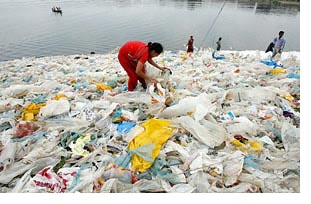 The Board of Supervisors on Tuesday is poised to enact one of the most far-reaching measures in the state to end the environmentally damaging proliferation of single-use plastic bags.
The Board of Supervisors on Tuesday is poised to enact one of the most far-reaching measures in the state to end the environmentally damaging proliferation of single-use plastic bags.
The highly-charged issue is being tackled by the board following the controversial rejection by the state legislature last summer of a ban on plastic bags. That vote came amid a furious multi-million dollar lobbying effort led by the American Chemistry Council, which represents industry players opposed to the measure.
The council has now turned its sights on L.A. County, sending out mass e-mails and using its Stop the Bag Police website to accuse the board of potentially undermining the economy and putting people out of work.
Environmentalists argue that the bags endanger wildlife, foul the beaches and ocean, and cost taxpayers millions annually to clean up. What’s more, they’re virtually indestructible, meaning the sacks can survive in the solid-waste stream for hundreds of years. Among the environmental groups that have written in support of the county’s efforts to ban the bags is Heal the Bay.
In January 2008, the board, led by Supervisor Zev Yaroslavsky, directed county departments to undertake an environmental analysis and develop draft legislation to ban the bags if a voluntary program failed to substantially reduce plastic sack consumption and promote more eco-friendly alternatives.
With the failure of the County program to achieve the targeted waste reductions mandated by the Board’s action, the tougher measures were pursued.
As outlined in a Board letter, Public Works’ preferred alternative would be to phase in a complete ban on plastic carryout bags in most stores in the county’s unincorporated areas, where the supervisors have direct jurisdiction. At the same time, a surcharge would be imposed on paper sacks to minimize a shift from one set of destructive environmental impacts to another. The goal is to get consumers to opt for the most cost-effective and environmentally friendly alternative—reusable bags.
Beyond banning the bags within its own jurisdiction, the county plan also calls upon its 88 incorporated cities to follow suit and adopt compatible programs at the local level to create a seamless countywide system that would serve as a model throughout the state.
For full details on the County proposal see the Final EIR part 1, and read the comments and responses in the Final EIR part 2. And for a deeper look at the political background of the controversy and its environmental implications, click here for an earlier account of the bag battle on Yaroslavsky’s website.
Posted 11/12/10
County says so long to Styrofoam [updated]
September 20, 2010
Los Angeles County officials are preparing to say good-bye to a product that literally won’t go away—Styrofoam.
Joining a national environmental movement, the Department of Public Works is recommending that L.A. County agencies and concessionaires be barred from using food containers made of expanded polystyrene, commonly known by the brand name Styrofoam. Instead, they’d be required each year to purchase millions of cups and plates composed of a variety of quickly degradable and recyclable materials.
The move is a prelude to the possible enactment of a broader—and more controversial—prohibition at food and retail outlets in the county’s unincorporated areas. That prospect, still at least a year away, already has drawn fire from the manufacturers’ trade group, the American Chemistry Council, which recently spent huge sums successfully lobbying against a Sacramento bill that would have banned single-use plastic bags.
In a report to the Board of Supervisors, public works officials cited a litany of environmental dangers widely associated with expanded polystyrene products, which are used by consumers for only minutes but can take generations to deteriorate. As the report notes, these plates and cups consume inordinate space in landfills or end up as litter that blights communities and often ends up in the ocean, endangering marine life. Moreover, according to the report, expanded polystyrene releases hazardous chemicals as it breaks down in the natural environment.
The board is scheduled to vote Tuesday on the matter.
Pat Proano, who heads public work’s environmental division, said the proposed ban should send a strong signal to reluctant business owners that the county is “willing to do this in our own house—that we’re willing to walk the talk.”
Proano said the proposal, based on a board motion passed more than three years ago, took so long because his department wanted to engage the business community and “make it more of a collaborative effort.” To that end, the county hired a consulting firm in late 2008 to assess the impact of expanded polystyrene products and suggest a hierarchy of environmentally-friendly substitutes. In the end, the consultant and the county were largely of a single mind, Proano said.
Although the public works department is recommending that the purchase of expanded polystyrene food containers be prohibited within 60 days of approval, there are exemptions for several of the biggest users, who’ll need more time to prepare or who have contracts with vendors that will need to expire before product changes can be made.
Some departments, such as Beaches & Harbors and Parks & Recreation have already begun the phase-out.
At this point, the Sheriff’s Department, which uses more expanded polystyrene than any county agency, would be entirely exempted from the ban. According to county officials, it would cost the department nearly 300% more to purchase environmentally friendly products that inmates would not be able to fashion into weapons.
“You can’t do much with Styrofoam,” said Jerry Plummer, purchasing manager of county’s Department of Internal Services. “You can’t grind it down to make a knife.”
So the Sheriff’s Department, Plummer said, is entering into a pilot-project contract with a polystyrene recycler who is purchasing a giant washer to remove the jail-house food. The Styrofoam will then be ground up for “cheap picture frames” and other products, Plummer said.
“Because of the county’s size,” Plummer said, “nobody is doing this kind of thing out there on our scale.”
Posted 9/20/10
Updated 9/21/10:
Supervisors voted unanimously to phase out Styrofoam use in county facilities and gave Public Works officials a year to study whether a ban should be enacted in unincorporated areas of the county. Board chair Gloria Molina called the action a “very monumental opportunity” and a “leadership step” for the county. Supervisor Zev Yaroslavsky concurred, noting the symbolic and practical importance of having the immense county workforce go Styrofoam-free. “When we sneeze, the rest of the county catches a cold,” he said.
Looking ahead to a possible broader ban, however, Supervisor Don Knabe introduced a motion, adopted by the board, that directs Public Works to explore whether there is “appropriate infrastructure” in place to ensure that any Styrofoam alternatives don’t end up causing environmental problems of their own.
Battle of the bags isn’t over
September 1, 2010
In the end, a ban wasn’t in the bag.
Hopes of outlawing throwaway plastic shopping bags throughout California went bust Tuesday night when the state Senate soundly defeated AB 1998 after passionate floor debate in the waning minutes of the legislative session.
But the fight now moves from Sacramento to the local front, where municipalities including Los Angeles County are poised to jump into the fray.
Los Angeles County Supervisors Zev Yaroslavsky and Mark Ridley-Thomas say they will push for a bag ban here. If the measure is approved by their colleagues on the Board of Supervisors, it could become a model for other local governments seeking to say no to disposable plastic bags.
“I think Los Angeles County, along with a number of other cities and counties around the state—including the city of Los Angeles, and the city of Pasadena, and the city of Santa Monica among others—will pass their own plastic bag ban,” Yaroslavsky told a KPCC radio audience Tuesday.
In taking up the fight, the county would be entering a big money, big media battleground in which both sides are fighting to influence business and consumer behavior in a big way. Opponents of the statewide ban, led by the American Chemistry Council, reportedly spent millions of dollars on lobbyists, a website called Stopthebagpolice.com, and radio and TV ads blasting the bill as a “$1 billion tax” on California consumers. The bill’s supporters spoke out in editorials and a tongue-in-cheek faux-nature video from Heal the Bay called “The Majestic Plastic Bag,” narrated by actor Jeremy Irons.
Proponents of the ban say it is long overdue. Overall, county residents consume about 6 billion bags a year, about 600 per person, according to a county report. The bags clog landfills, produce widespread litter and present an environmental hazard in the oceans as marine animals swallow or get tangled in the billowy plastic.
The state bill, sponsored by Assemblywoman Julia Brownley of Santa Monica, would have banned single use plastic bags at supermarkets, drugstores and convenience stores. Consumers would have been required to bring their own bags or to pay for paper bags at cost. Taxpayers pay an estimated $25 million each year just to put used plastic bags in landfills, Brownley pointed out in support of the bill.
In Los Angeles County, the Public Works Department already is working on a potential bag ban ordinance to be presented to supervisors in October, although key provisions have not been finalized, said Coby Skye, program manager of the Single-Use Bag Reduction and Recycling Program at the Department of Public Works.
A county ban would apply only to unincorporated areas, where 1.3 million county residents live.
Supervisors have been tangling with the bags since 2007, when they passed a motion directing DPW to produce a plan to reduce the use of the bags. In 2008, the county adopted a voluntary bag reduction and recycling program that was backed by the plastics industry. The program laid out benchmarks for compliance which have not been met, thus triggering the development of a potential ban.
San Francisco passed the state’s first ban in 2007. Bans enacted after that in cities including Oakland, Manhattan Beach and Santa Monica have been blocked in court by opponents who demanded and won costly environmental impact reviews. Los Angeles County is completing an environmental impact report that the county could use to defend a ban if one is enacted here. A draft (available here) concludes that, despite the claims of opponents, a ban would produce no significant direct negative environmental impacts.
In Malibu, the county’s only city with a working ban, having plastic bag-free checkout lanes has proven popular.
Rebecca Nelson, senior office assistant in the city’s Environmental Programs department, said grocery stores and drug stores have done a good job complying with the 2008 ordinance. Restaurants have been more of a challenge, with some establishments reverting to old ways. (AB 1998’s provisions would not have covered restaurants.)
“A few sneaky managers have gone to plastic and we have caught them in our annual inspection,” Nelson said.
Bringing a reusable bag to the market is not a big stretch for residents of the celebrity-studded community where environmental friendliness is as much a part of the local lifestyle as going out for sushi at Nobu. But visitors may bring a different set of expectations for how their groceries or takeout orders should be packaged.
“Sometimes we get tourists in here and they’re shocked—or they don’t understand,” said Emily Simon, manager of Malibu Kitchen, located in the Malibu Country Mart.
But for those who live in Malibu, Simon said, the bottom line is: “No one wants to see plastic floating around on the beach here.”
Posted 9/1/10
A farewell to lawns
September 1, 2010
Earlier this year, the Long Beach Water Department started a program to encourage its residents to destroy their grass lawns. It wasn’t part of some vast government plot against green thumbs. Instead, the agency was hoping to persuade folks to go green by growing a different kind of green out in the yard. And the city was willing to spread around some greenbacks–$1 for every square foot of grass replaced with sustainable landscape or “hardscape” such as brick or tile—to get people to take the plunge into conservation-friendly landscaping.
Turns out they didn’t need much persuading. Within an hour of the application process opening in April, Long Beach had received 120 project requests—enough to completely wipe out the $250,000 initially budgeted for the program. The agency now has expanded the funding to $360,000 to meet the demands of everyone on the waiting list, and expects to save 40 million gallons of water over the next ten years.
Similar programs have been offered from Las Vegas to the Los Angeles Department of Water and Power, and now customers of the Los Angeles County Waterworks Districts are getting a chance to join the break-up-with-your-lawn movement, too.
The Cash for Grass program (it’s nothing illicit, just kind of a “Cash for Clunkers” project aimed at your old sod instead your old Saab) will provide cash rebates of $1 per square foot to those who replace their water-guzzling grass lawns with water-efficient landscaping. One can expect to save 55 gallons of water per year for every square foot of grass replaced. Information on the program is here, along with an application to print out.
The county Waterworks program began on August 20th and is slated to end on January 31, 2011, or until the $250,000 allotted for the program runs out. All Waterworks customers, in communities including Malibu, Marina del Rey, Topanga, Acton, Val Verde, Kagel Canyon and the Antelope Valley, are eligible to take part.
But think twice about delaying, given the program’s success in Long Beach.
Even Matthew Lyons, director of planning & water conservation for the Long Beach Water Department, was surprised at what he calls the “overwhelming response” to the Lawn to Garden Incentive Program in his city.
Replacing lawn with drought-tolerant plants doesn’t just save money; it also sets up a whole new way of keeping up with the Joneses, as these Long Beach lawn makeovers make clear. (And drought-tolerant doesn’t necessarily mean drab, as these plants colorfully demonstrate.) Most of all, the no-lawn movement acknowledges the reality of scarce water resources in the region.
“Getting rid of grass lawns is important for Southern California as we look into the future,” Lyons said, “because the fact is that in 20 years if people still keep their grass lawns, there won’t be water.”
Posted 9/1/10
Kicking the junk mail habit
August 12, 2010
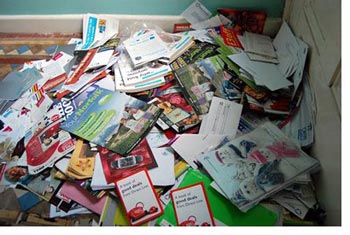 You compost. You recycle. You bring your own bag to the grocery store.
You compost. You recycle. You bring your own bag to the grocery store.
Now it’s time to get to work on another environmental menace: junk mail.
Most attention in recent years has been focused on keeping spam out of computer inboxes. But unsolicited “snail mail”—coupons, credit offers, national advertising,
catalogs—has remained an annoying fact of life.
And, unlike spam, this kind of junk mail can end up in a landfill. To help you get out from under the onslaught, the county Department of Public Works has pulled together a page full of useful addresses and contacts. Just think of it as a spam filter for your mailbox.
Local flavor blossoms at farmers’ markets
July 28, 2010
What’s fresh and green and fun all over? Farmers’ markets, of course—and the 3rd District is bursting with them. No longer just a place to find the makings for a locally-grown dinner, a thriving market is now a scene unto itself, complete with music, chatting, sampling, strolling and world-class people-watching.
Los Angeles is home to the largest concentration of certified farmers’ markets in the state, according to the county Agricultural Commissioner, which inspects the markets to ensure that all the produce is California-grown and being sold directly by the grower or grower’s representative. (That’s what makes it a “certified” market.) From the half-dozen certified markets that began in 1979, the county now boasts 124. Here’s a rundown on all of them, complete with times and locations. And if you’re inclined to explore the 31 markets located in our district, this list will get you started.
One of the biggest and best-known on anybody’s market list is the Hollywood Farmers’ Market, which comes to life every Sunday from 8 a.m. to 1 p.m. at Ivar and Selma avenues, just off Hollywood Boulevard. Serving a diverse clientele, the market is as much a celebration of community as a destination for gourmet locavores seeking out the finest in heirloom tomatoes or French green beans.
Photographer Tali Stolzenberg-Myers spent a recent Sunday at the market. This gallery offers a taste of what she found.
Photos by Tali Stolzenberg-Myers
Posted 7/28/10
County green program fading to black?
July 15, 2010
The county’s AB 811 loan program looked like a great way to help L.A. County property owners go green.
Named after 2008 California legislation, AB 811 created an innovative way for local governments to help home owners finance energy-saving retrofits—from air-tight windows to solar panels—through assessments on property tax bills. More than 50 cities in the county signed on to the plan, which officials also predicted would create thousands of green-collar jobs.
But now, despite all the plans and hoopla, the county’s AB 811 energy program has been short circuited, along with similar programs in about 20 other states. The reason: federal mortgage regulators have called such property tax-based programs a threat to the safety of home mortgages.
In a July 6 statement, the Federal Housing Financing Authority said that many energy retrofit programs that rely on property tax assessments “present significant risk to lenders and secondary market entities.” Since FHFA regulates Fannie Mae, Freddie Mac and 12 Federal Home Loan Banks, the federally-chartered corporations that own most home mortgages, their concerns effectively halted programs everywhere.
In light of the FHFA’s resistance, the Board of Supervisors unanimously passed a motion this week by Supervisor Zev Yaroslavsky calling for a halt or reduction in spending on the AB 811 program. The motion urged the Chief Executive Office, the Internal Services Department and Office of Sustainability to push for legislative solutions at the state or federal level to answer the federal mortgage regulator’s objections.
California Atty. Gen. Jerry Brown, meanwhile, filed suit Wednesday in federal court against FHMA, Fannie Mae and Freddie Mac in an effort to restart the program. Brown, in a San Diego press conference, accused federal mortgage officials of engaging in “regulatory strangulation of the state’s grass-roots program.”
The suit argues Fannie Mae and Freddie Mac rules do not bar PACE-style assessments. In the suit, Brown, who is the Democratic candidate for governor, is asking the court to issue an injunction barring the mortgage corporations from “taking any adverse action against any mortgagee who is participating, or may participate, in a PACE program under California law.”
The White House and U.S. Department of Energy favored the so-called Property Assessed Clean Energy, or PACE, programs but were unable to convince federal mortgage regulators to get on board. (A rundown on the debate from the Department of Energy can be found here.)
The sticking point came over the arcane but important question of which loan would be paid first in case of default. Because the energy retrofit loans are classed as property-tax assessments, they take the “first lien” position and have priority over a home’s mortgage when the worst happens.
First lien priority doesn’t upset mortgage lenders when the property assessments are small and paid off quickly, as when governments tap residents to pay for sewers. But when the assessments amount to tens of thousands of dollars paid over many years, the energy loans could “disrupt a fragile housing market and…raise safety and soundness concerns,” the FHFA concluded.
The new loan restrictions most directly affected home loans. Loans for retrofits of apartments or businesses may be able to go forward, pending further review by the county.
The loan program was to be the centerpiece of the Los Angeles County Energy Program, which also included consumer education, facilitation rebates from utility companies for retrofits and creation of one stop shops to streamline permitting for energy efficient construction. The AB 811 setback won’t derail those efforts.
Howard Choy, general manager of the county’s Office of Sustainability who is responsible for setting up the county’s energy program, remains optimistic that the setbacks are temporary.
“From the folks I’ve talked to, we think this issue is going to get resolved,” said Choy, perhaps in federal legislation introduced in 2011. “This type of program has no conservative or liberal slant to it. It’s all about using loans to homeowners that will be paid back, and it’s going to create jobs.”
Posted 7/14/10




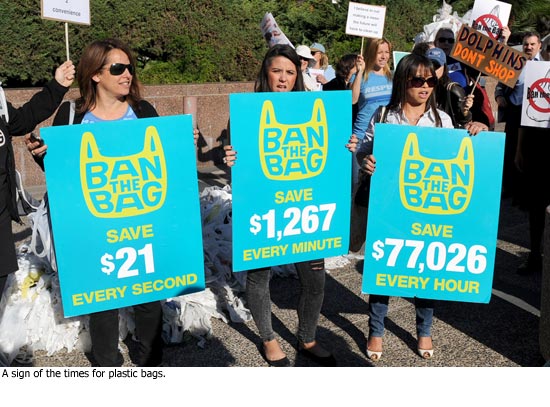
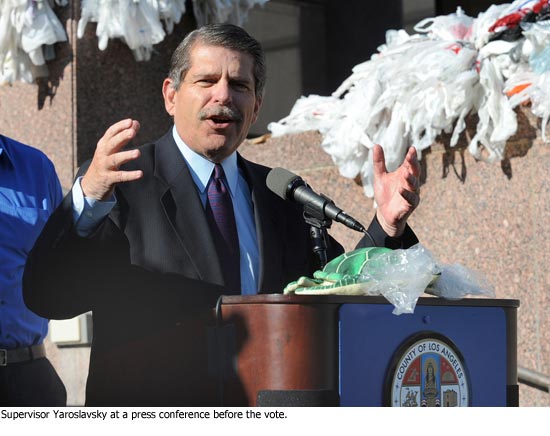
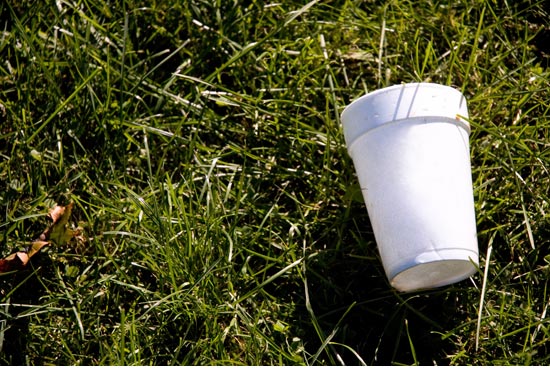
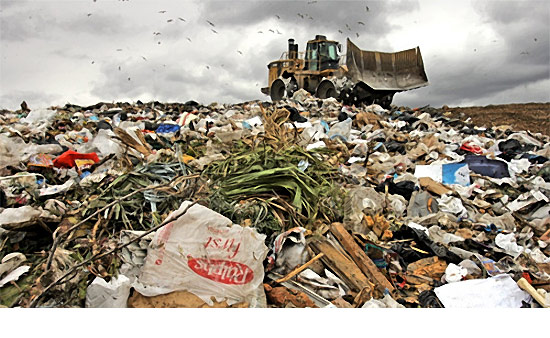

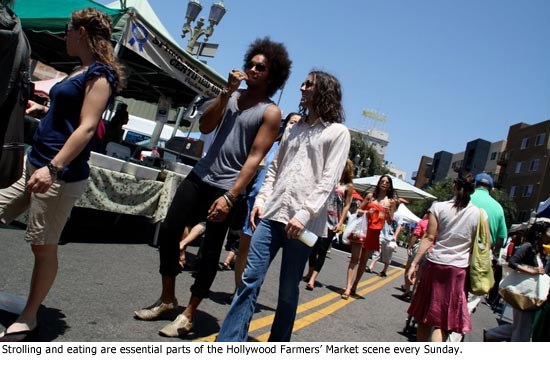























 405 bridge work causes a stink
405 bridge work causes a stink
